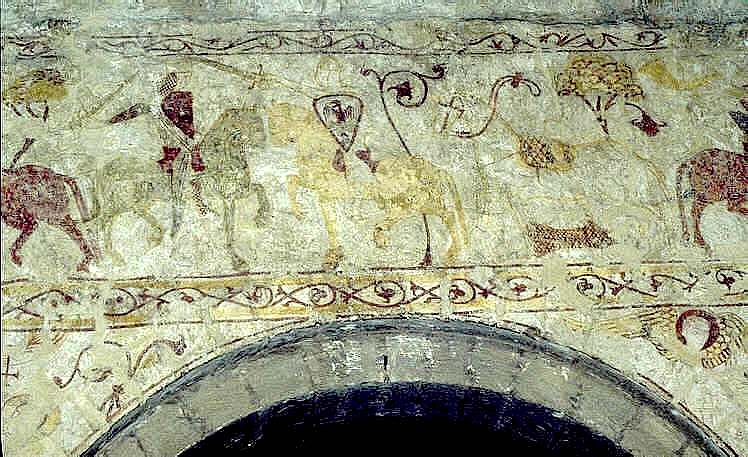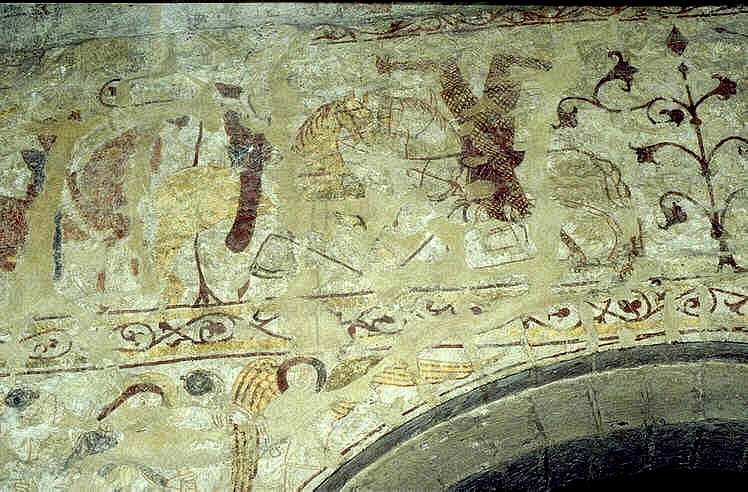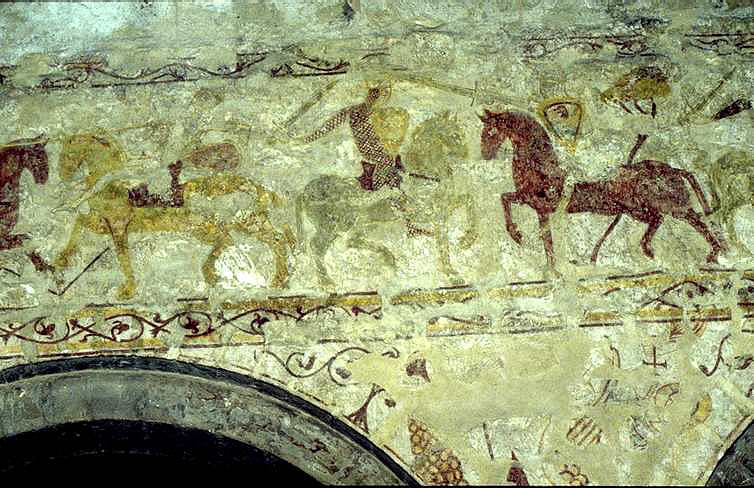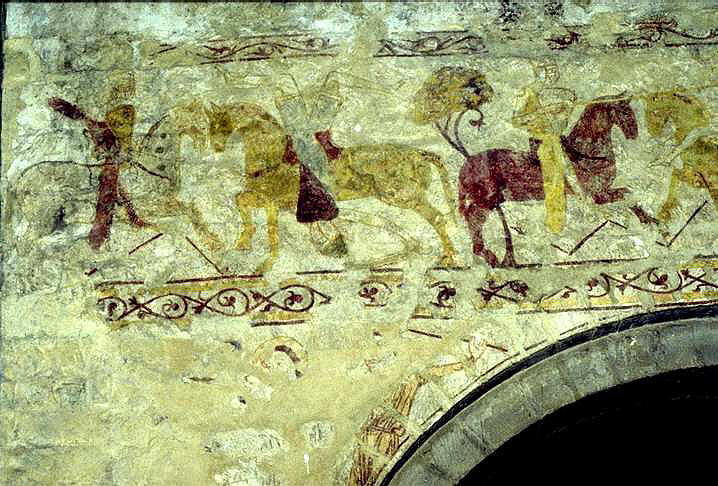Claverley, Shropshire (†Hereford) c.1200
Allegorical Jousting (Psychomachia)

To the right and below are details from the allegorical frieze at Claverley, showing knights jousting. EW Tristram believed, probably correctly, that these were battles between Virtues and Vices, deriving ultimately from the Psychomachia of the 4th century Latin Christian poet Prudentius.¹ As Tristram remarked, the frieze seems more appropriate for a medieval castle than a parish church, but Claverley church was ‘collegiate’ and served by the monks of nearby Quatford.² In Prudentius’s scheme, Chastity overcomes Lust, Patience Anger, Humility Pride, Temperance Luxury, Benificence Avarice, and Faith Discord.

It is difficult if not impossible to identify any specific pairing here, although perhaps the riderless white horse towards the right in the upper photograph, its rider (reduced to a patch of red representing his mail surcoat) lying on the ground below and its bridle flying ungrasped, may represent Luxury – certainly no other horse has such an elegant patterned saddle. There might, though, be better candidates for this pairing elsewhere. To the left of this, the rider on the yellow horse has an eagle on his shield, but this detail may mean several things or nothing at all, as is the way with allegory. Similarly in the photograph below, it has been suggested that the unhorsed rider, legs in the air as he falls, is Pride, who disdained to use his bridle.

In the spandrels below the frieze, more single Vice/Virtue combats are painted, this time between standing figures, with some of the Virtues shown as female; these seem to comment on and amplify the scenes above. The Virgin appears, with censing angels, as does the Manus Dei representing God, these latter intervening on behalf of the Virtues. But these paintings are extremely fragmentary and confusing now. They are though of the same date as the Joust above, and not 15th century, as information available in the church seems to imply.
Two more knights, one with a device (unreadable) on his shield, fight with swords to the right of the picture. To the left of them, an only faintly visible knight on a yellow horse is forced backwards in his saddle by the lance of his opponent, who is visible at the right of the lower photograph, very upright on his red mount despite striking home with his lance. The contrast between his evidently perfect balance and that of his destabilised adversary may indicate that this is Temperance v. Luxury (or Excess) a conflict often represented by a firmly upright figure and a tottering, unbalanced one.

To the left of this pairing, a knight on a dapple grey horse unhorses another on a yellow one, who hangs upside down from his saddle. Patience overcoming Anger? The yellow horse – meeting the dapple literally head-on – has a distinctly malign expression, just discernible here perhaps and rather clearer on the wall and in Tristram’s drawing³.
The Claverley frieze’s resemblance to the embroidery called the Bayeux Tapestry has been remarked on many times, but there is probably no connection with that. Font sculpture – Tristram cites the fonts of Southrop (Glos) and Stanton Fitzwarren (Wiltshire.), which apparently have carved representations of knights in armour (I have not seen them) as parallel examples – and miniature painting from the ninth to the twelfth centuries is another likely source for this kind of frieze.
Website for All Saints, Claverley
¹ Tristram 1, pp.48-49
² Prudentius (348-410), for whom there was no greater triumph than that of the Passion of Christ and the Saints, was and remained a standard author for the medieval school curriculum. The monks would have been familiar with his ideas.(v. ER Curtius, trs. Willard R Trask, European Literature & the Latin Middle Ages, London, 1952, p. 49-50 & passim
³ Tristram 1, plate 72